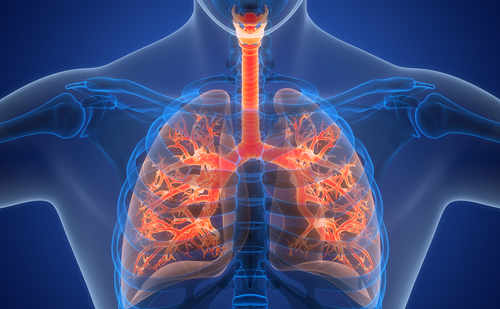Welcome to the latest issue of touchREVIEWS in Respiratory & Pulmonary Diseases. The past three years have been intensely busy, chaotic and traumatic, especially for those of us working in the respiratory field. Having personally spent hundreds of hours only working in COVID-19-related critical care, I have missed out on many new developments in respiratory healthcare. This issue features a wide range of respiratory pathologies, drawing on the knowledge and experience of experts across the field. It will provide you with a necessary distraction from COVID-19, focusing on progress made in the field, in spite of the challenges we have faced.
We begin with an editorial by Ghebre on microbial infections resulting from the long-term use of proton pump inhibitors, which are used to treat gastro-oesophageal reflux disease in patients with chronic respiratory diseases. The need to regularly monitor at-risk patients is highlighted.
We could not totally avoid mentioning the COVID-19 pandemic, which has impacted on all aspects of medicine, and this is reflected in a further editorial. In this article, Cox-Flaherty and Gartman consider the challenges presented by the pandemic in the provision of care to patients with neuromuscular disease and comorbid sleep disorders.
Following this is one of our popular expert interviews, which aim to provide a snapshot of hot topics in respiratory medicine. In this expert interview, Andrew Bush discusses the key messages of the new European Respiratory Society guidelines for the management of bronchiectasis in children and adolescents.
The prevalence of non-tuberculous mycobacteria infection continues to rise worldwide. In the first of our review articles, Barua and Ali describe the challenges presented by this infection in Bangladesh, with the aim of raising awareness of a global problem.
Another disease requiring further attention is primary ciliary dyskinesia (PCD), a rare genetic disease that causes recurrent and chronic infections of the upper and lower airways. Eralp and Karadag provide a comprehensive overview of recent advances in the diagnosis and management of this condition and emphasize the need for specialized PCD centres.
Aspirin-exacerbated respiratory disease (AERD) results in chronic rhinosinusitis that is often refractory to standard treatments. In a review article, Arnold et al. explore the prevalence and diagnosis of AERD and discuss the latest advances in its management.
Alpha-1 antitrypsin deficiency is second only to cystic fibrosis as the most common genetic disease to cause clinically significant lung disease. In a review article, Goel et al. review the latest evidence in the management of this challenging condition.
With increasing pressure for the use of blood eosinophil counts (BEC) as a biomarker in chronic obstructive pulmonary disease (COPD). Cazzola et al. discuss the use of BEC in COPD in a review article evaluating the research conducted so far in this field.
Respiratory syncytial virus infection is a major cause of respiratory tract infections in infants and young children and remains the leading cause of hospitalization among those less than 1 year of age. In a further review article, Domachowske reviews nirsevimab, an extended half-life monoclonal antibody, for the prevention of this infection.
Chronic rhinosinusitis (CRS) is a common condition worldwide, yet it remains challenging to treat. Lelegren et al. describe an important new treatment option, mepolizumab, a monoclonal antibody against interleukin-5 that received US Food and Drug Administration approval in 2021 for the treatment of CRS with nasal polyposis.
Finally, we feature a retrospective study among Lebanese patients by Fata et al. investigating which factors predispose patients to asthma exacerbations requiring hospitalization.
touchREVIEWS in Respiratory & Pulmonary Diseases would like to thank all expert authors who contributed towards this issue, our Editorial Board for their ongoing support and guidance and also to our society partners for their ongoing support.
Finally, I need to introduce myself. I am Richard van Zyl-Smit, the new Editor-in-Chief for touchREVIEWS in Respiratory & Pulmonary Diseases. I am a South African pulmonologist and professor at the University of Cape Town. My respiratory interests are broad given the paucity of pulmonologists in Africa, but primarily focus on tobacco cessation, obstructive and interstitial lung diseases with a strong translational research leaning. I hope to bring a global and diverse perspective into the new unified touchREVIEWS in Respiratory & Pulmonary Diseases and support the team to provide the readers with expert commentaries, informative reviews and the latest on what is happening in respiratory care.
All the best to our readers for 2022, stay safe and stay strong.
Richard van Zyl-Smit
Professor Richard van Zyl-Smit is a consultant pulmonologist at Groote Schuur Hospital, Cape Town, South Africa, and Deputy Head of the Division of Pulmonology at the University of Cape Town, South Africa. He is a principal researcher at the University of Cape Town Lung Institute and is President Elect of the South African Thoracic Society. His major clinical and research interests are airway diseases, specifically: asthma and COPD with a focus on tobacco, household air pollution, electronic cigarettes, and their impact on pulmonary immune responses (to pneumococcal and mycobacterial infection) and the development of COPD. He has over 80 peer reviewed publications and he has additionally been involved in industry sponsored research for over 13 years across a spectrum of pulmonary disorders. He serves on the American Thoracic Society International Health Committee and is passionate about teaching, training, sustainability and mental health in health care. He is the South African representative on the GOLD assembly and a GINA global ambassador. After qualifying as a pulmonologist, he completed a basic science PhD investigating the effects of tobacco smoke and nicotine on human pulmonary defence mechanisms to tuberculosis infection.












